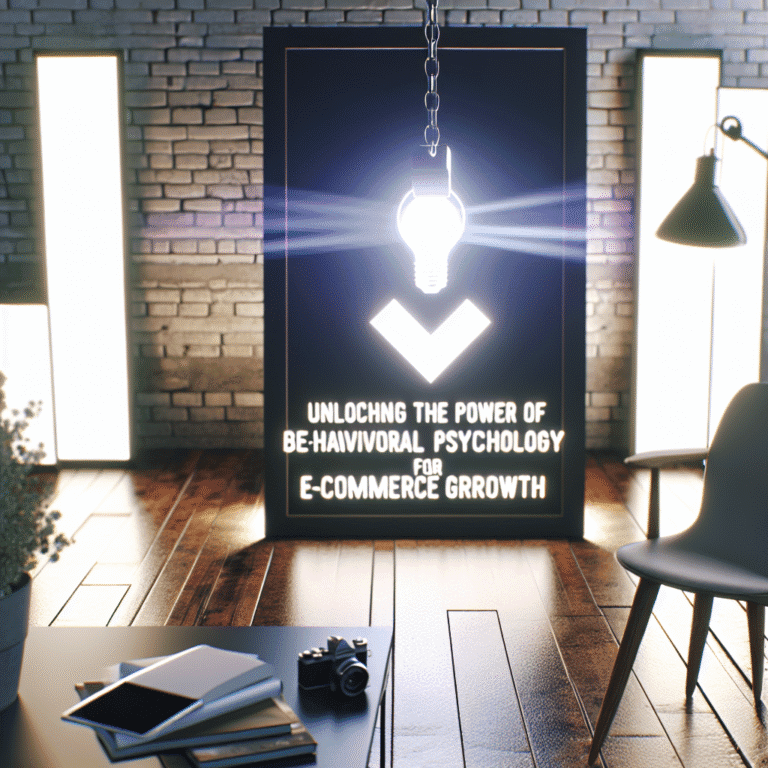Getting Clicks But Not Conversions? Let's Fix That
So you're pulling in the clicks. Paid ads, emails, organic visits—oh, they're happening. But actual purchases? Not quite. It feels like your visitors are stuck in an IKEA labyrinth, blindfolded, with a wobbly compass. They click, maybe even add to the cart, but then vanish faster than a date who finds out you hate hiking.
Here's the twist: the problem isn’t your ads; it’s everything that follows.
While many in ecommerce focus on snagging visitors, the conversion funnel leaks like a colander. If you don’t spot the gaps, you can’t plug them. It’s time to sort that out. Using data to map customer paths doesn’t just boost conversion rates. It gives you command over them. No fluffy metrics; just cold, hard facts about where things fall apart. Transform your site from a spooky house full of exit points into a place people actually buy things.
Customer Path Mapping and Growth
Plenty of ecommerce teams love to call themselves "customer-focused." Mostly, that means trusting their gut and tossing emojis in Slack threads to make big decisions.
Now, enter data-driven customer mapping. It's not some PDF you chuck at investors. It’s a true insight into why carts get abandoned, emails ignored, and check-outs abandoned. It sharpens those vague hunches into clear growth strategies. Here’s what it does:
- Spots friction that tools like Hotjar might miss, like awkward ad copy on landing pages
- Reveals where users drop off, such as switching devices or ghosting at checkout
- Aligns marketing and product by painting a shared picture of the buying path, not separate scripts
- Boosts your returns on ads, not by spending more, but by refining the route from interest to purchase
McKinsey says path improvement can mean 15% more revenue and 20% happier customers. Ignoring this isn’t an option; it's the line between growing at pace or spinning the marketing wheel of fortune.
The Four Stages of an Ecommerce Path
Most online shoppers don’t just waltz in, ready to buy. They browse, compare, and vanish mid-process—and often come back like nothing happened.
Forget your marketing channels for a minute. Focus on their behaviour. Four steps, clear signs, real chances to win them over.
1. Awareness
They spot you but aren't sold yet. Search, display, social—the main thing is to show them, "Hey, this is exactly what you need."
2. Consideration
Now they're intrigued, but cautiously. They're looking at product pages, FAQs, virtually peeking around corners. Measure how deep they scroll, how long they linger, and where they exit.
3. Decision
This is the danger zone. Their cart's loaded, but so is their scepticism. Does delivery take ages? Is your site AMEX-unfriendly? Why must they create an account to buy? Every small detail here either clinches or kills the deal.
4. Post-Buying
Turn a purchase into loyalty. Did you send a thank you note? Is the delivery info buried in spam? Was the setup smooth or more like a mystery? Emails, packaging, follow-ups—all these finish the race.
Don’t overcomplicate things. Simple, honest stages work better than charts with endless branches.
Handy Tools for Mapping the Path
Building a customer path with data isn’t about wishing and hoping. It’s about seeing clearly and using the right tools. But watch out, dashboards can mesmerise. Stats aren’t insights.
1. Google Analytics 4
"Path Exploration" and "User Explorer" reveal where people drop off or circle back awkwardly, especially when you track funnels real-time.
2. Hotjar or Microsoft Clarity
Use heatmaps, session recordings, and rage-click analysis to uncover UX breakdowns you wouldn’t spot alone.
3. Klaviyo or Customer.io
Watch email performance by stage. Who’s ignoring abandoned cart emails? Who’s buying, and who’s just not interested? Create flows that tell conversion stories beyond general reports.
4. On-site Surveys
Use tools like Typeform with prompts linked to actions. A golden question: “What almost made you not buy today?” Skip smiley faces; go for short answers.
5. Attribution Tools
Get past the drama of first-click vs last-click. Solve it with tools like Triple Whale and Rockerbox. Your team can then focus on making campaigns work, not which one gets credit.
6. Post-purchase Email Replies
Cranky messages from customers? Don’t bin them. Catalogue them. They are guides to where your site trips people up.
7. Scroll Depth and Click Maps
Are visitors actually reading crucial page content or rushing to specs? Are they stuck halfway through a blog with no calls to action?
8. Funnel Analysis and Heatmaps
Step-by-step views on where conversions falter. Is it on the cart page, payment screen, or shipping method?
9. UTM Tagging
Messy UTMs mean no clear data stories. Standardise your tags so you're not reading marketing gibberish.
10. Cohort Analysis
Track customers by date, source, and behaviour. Quit focusing on one-off buys, and find what turns them into return fans.
Turn your ecommerce path from a confusing mess into a mystery you can actually solve.
Overlooked Hiccups That Ruin Conversions
Want more sales? Quit chasing UX perfection and think like your average customer. They're distracted, shopping while Netflixing at midnight. Here's what's quietly wrecking your sales flow:
- Too many choices: 37 colour options are 37 reasons to leave.
- Badge overload: Nobody understands half those site badges.
- Discount mismatch: Offering 20% off in ads that leads to full-price pages? That's how you lose them.
- Premature account sign-up: Make them log in just to add to cart? Nope. Shift it to checkout.
- Hidden shipping fees: Immediate trust-breaker. Show costs upfront.
- UX glitches: Buttons not working? That user’s long gone.
- Inconsistent mobile experience: Test beyond your own phone.
- Lack of social proof: No reviews or user photos? Your product pages look lonely.
- Unanswered questions: “What does it include?” “Is it true to size?” Show them or they’ll leave.
- Too slick design: Looks can be too polished. A bit of honesty builds connections.
Success comes from clarity, not polish. Think ease, not prettiness.
Testing and Validating Path Hypotheses
Let’s stop the debate over buttons and start testing real outcomes.
1. Ask a Clear Question
Are low mobile sales due to a hidden buy button surrounded by misleading badges?
2. Make a Hypothesis
“If we make the buy button visible on mobile, sales will rise due to better visibility.”
3. Run an A/B Test
Use tools like VWO or Convert. Don’t pull the plug early. Wait for a valid result. Decide and move on.
4. Break Down the Result
Better sales on Android but not on iOS? Great. Deal with iOS separately. Don’t let big numbers hide useful insights.
5. Decide and Record
Adopt the change or ditch it. Note it down regardless. Data is only useful if it leads to action.
Bringing It All Together
When you stop guessing and start watching, your ecommerce site stops bleeding sales.
Sales will rise. Returning buyers will increase. Email campaigns will work like magic. And crucially, your team won’t be pulling in different directions.
A data-led customer path gives you an edge. It swaps opinions for observations. It highlights the drop-offs, doubts, and confusion you can’t see at-a-glance.
This isn’t about tracking every little thing. It’s about acting on what matters. Craft an online shopping experience that truly understands your customer—not some idealised version, but the real, multitasking shopper.
So next time you’re about to celebrate a slight drop in bounce rate, ask:
"Where exactly are we losing our keenest customers, and what’s the data actually telling us to fix?"
Then? Fix it. Test it. And watch those ecommerce sales finally do what they’re meant to. Welcome to the sweet spot of conversion success.





